The land Seabrook currently encompasses has a deep history, from the natural resources used by indigenous people to the repeated clear-cutting of the forests prior to Seabrook’s establishment. Following the logging of these lands, what was left behind was an unhealthy and unmanaged forest landscape that would take many years to correct and regenerate.
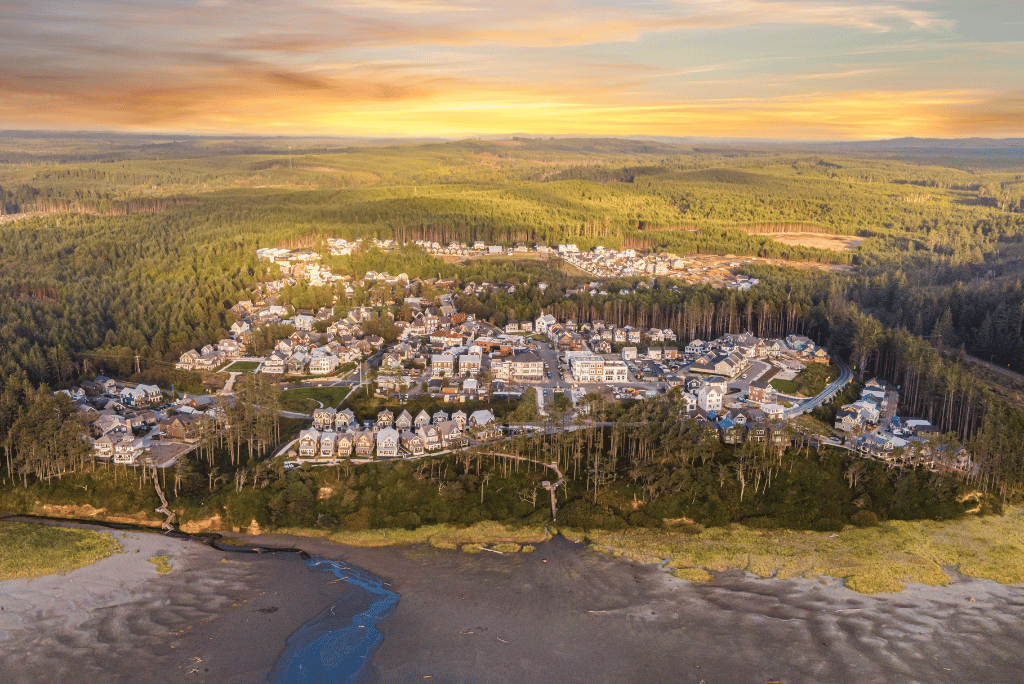
Through careful planning involving teams of experts, Seabrook is dedicated to protecting and revitalizing these inherited forests by implementing a long-term forest stewardship plan with the goal of returning the forests to their original health and vitality, more reminiscent of the forests that existed prior to the logging industry boom of the past century.
Inheriting Unhealthy, Post-Lumbered Land
“Many people, when they look at the woodlands in and around Seabrook, often think that these forests are untouched, and that’s simply not the case,” says Stephen Poulakos, Director of Town Planning & Design. “Our work with expert foresters, ecologists, and other landscape architects have indicated that most of the property has been lumbered at least two times, and in some areas, three times.”
Repeated lumbering over the course of many years has resulted in lasting damage to the forest ecosystem and related habitats. As a result, very thick and dense forest stands have been left behind that do not allow for adequate sunlight to nourish the important undergrowth typically found on the forest floors of true old-growth climax forests. Walks through Seabrook’s preserve areas reveal a series of forest habitats that are choked with the remnants of fallen trees, stumps, and other left behind logging debris. This has reduced biodiversity and has made it more difficult for wildlife and diverse plant life to exist and thrive.
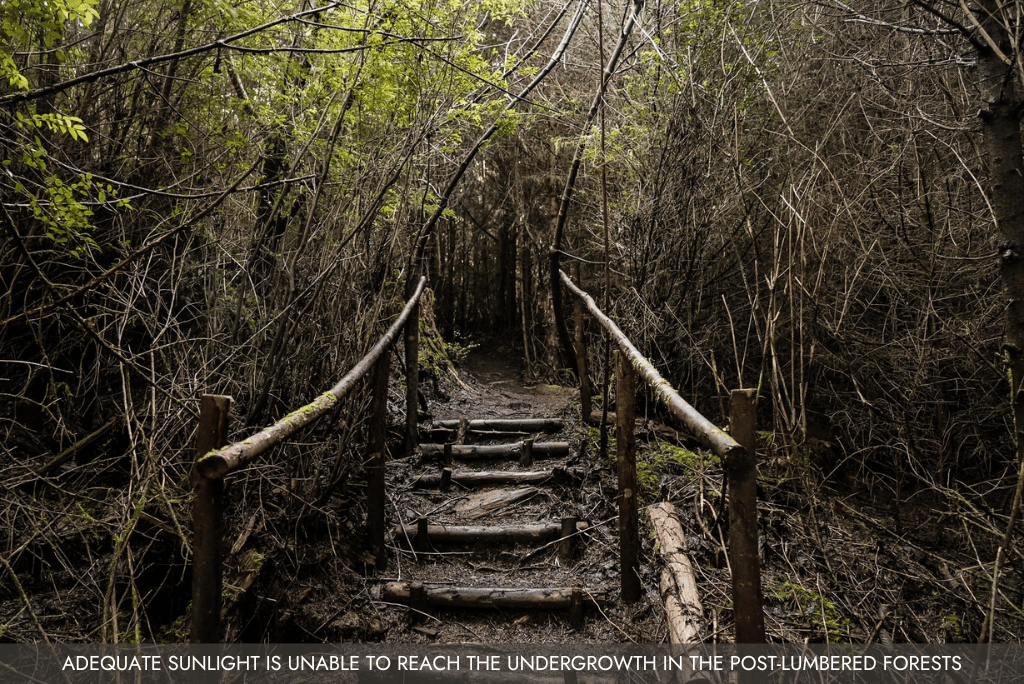
“All of the different forest areas are in different degrees of regeneration,” says Stephen. “Unfortunately, many of these forest stands were lumbered during times when forestry practices were not as carefully scrutinized.”
Today, wetlands, creeks, and other conservation areas are much better protected. Seabrook has fully embraced these protections and has been proactive in finding the best ways to help nurture the unhealthy forest stands, having not been well managed for decades.
“We take this responsibility of being stewards of this land very seriously,” says Stephen. “We’ve been analyzing it and studying it with experts in the field to help us come up with a forest stewardship plan for the future.”
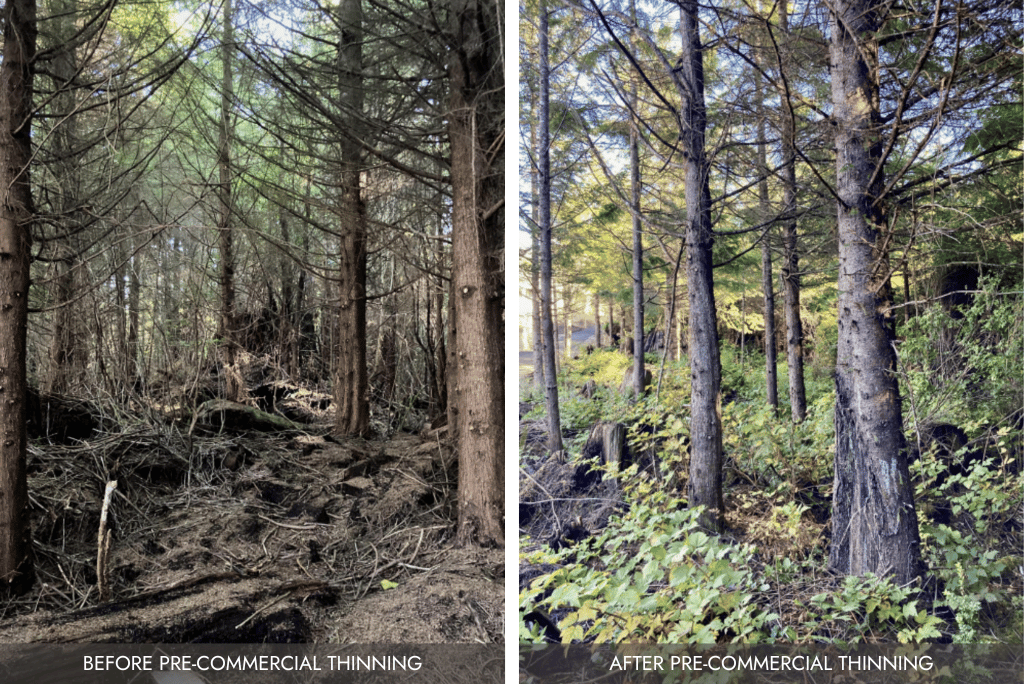
The town planning of Seabrook takes into account many factors, always with conscious decisions being made to create and sustain a healthy forest and town.
“One of our most significant challenges is how to seamlessly integrate the town plan into the natural environment,” Stephen says. “Oftentimes, this means that specific forest areas, usually the most unhealthy of forest stands, are required to be cleared to make way for new homes and neighborhoods. This is always done in a way that encourages context-sensitive design by concentrating a denser town footprint on a smaller segment of land, in turn allowing for the creation of more walkable and bikeable places as opposed to the stark alternative of large lot suburban development that we are all too often familiar with today. This is how we seamlessly intertwine the town into the coastal landscape while protecting the forest stands that are worthy of protection for regeneration as future greenways and parks that will be gladly handed down to generations to come.”
Remembering The Land’s History To Build A Lasting Legacy
All of the coastal land prior to the timber industry’s arrival was used throughout the year for sustenance by Native Americans, dating back centuries. The land was incredibly fruitful and used for everything from camping, fishing, clam digging, foraging, and utilizing trees and plants for many different purposes.
According to consultations with Quinault tribal members, the cedar tree is perhaps the most important tree of the Quinault Indian people. Historically, they used everything from the bark and wood for cedar planks for long houses, canoes, basket weaving, clothing, and much more.
While the fact of the logging history of the land cannot be changed, remembering all of the land’s history is built into the forest stewardship plan. The timber industry in Washington helped shape the Pacific Northwest into what it is today. It was not only a leading source of timber products globally, it also boosted the local economies, population, and overall development throughout all of the Pacific Northwest. There are eventual plans to build more trails with museum-style signage that will display the Quinault Indian Nation history, logging history, and ecology history of the forest to help trail-goers understand the complex history these forestlands hold.
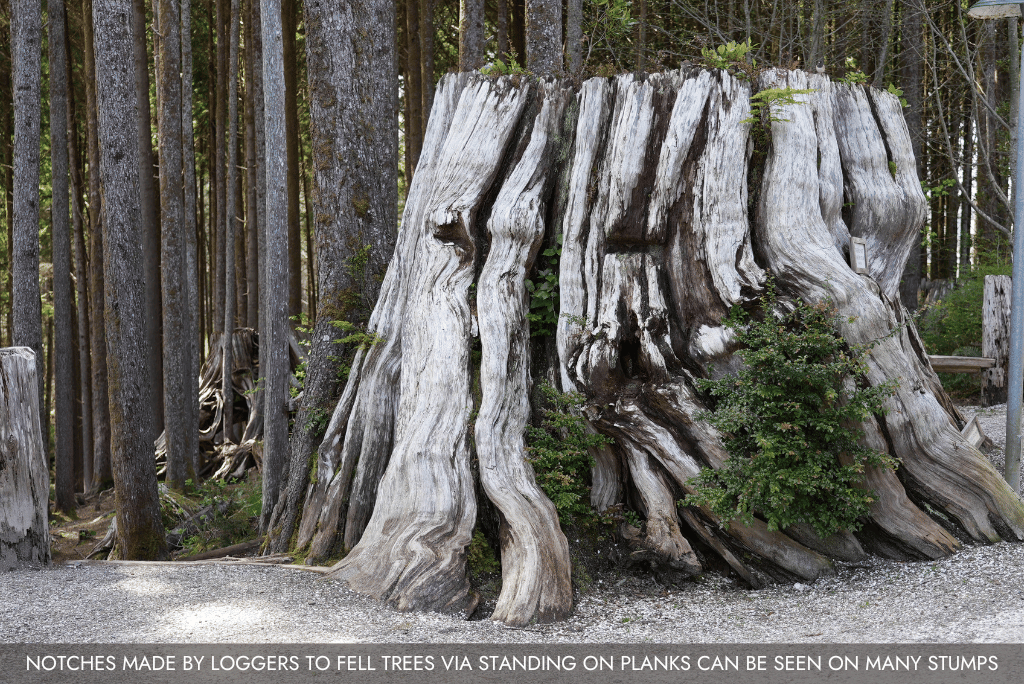
With the help of expert advisors at the Watershed Company, Seabrook has created short-term, middle-term, and long-term plans to bring back sustainable growth to the forest. Part of these plans include a concept known as forest thinning, where the incremental removal of specific trees is advised to bring more light and nutrients to the healthier growing trees, their understories, and the native shrubs and plants that grow upon the forest floor.
In the future, more of the indigenous native plants will have space to flourish, including plants like varying fern species, salmonberry, salal, huckleberry, elderberry bushes, and many more.
There are several locations throughout Seabrook where passersby can observe the land’s history. Take a look at these historical locations around town:
Northwest Glen’s Coastal Preserve Area – While town planning development would have permitted the creation of 16 oceanfront lots in the Northwest Glen neighborhood lowlands, Seabrook’s design team advised against it, instead, creating a coastal preserve in lieu of building additional oceanfront homes. It’s fondly referred to as Town Founders, Casey and Laura Roloff’s, gift to this neighborhood, the town of Seabrook, and the North Beach area. The concept of founder’s gifts comes from the town of Seaside, Florida, which has been an inspiration to Seabrook’s town plan. With every new neighborhood, Seaside’s founders would give a gift of art, amenities, or common areas to that neighborhood and the community. Though Northwest Glen’s Coastal Preserve is much more than a gift from the founders, it did set the tone for the town’s commitment to preserving the natural beauty and making its beauty more accessible.
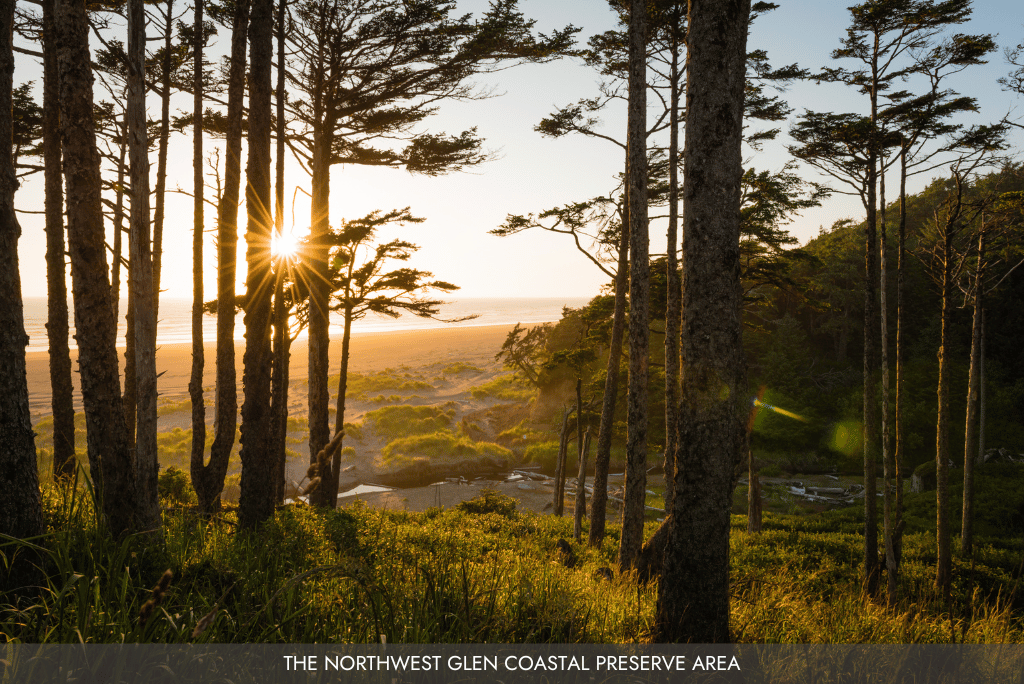
The Old Cedar Stump – The stump is located in the Mill District. Take a look at the large notches on the stump’s outside perimeter. These notches were where loggers would place wooden longboard planks in order to stand and fell the tree with sizeable 2-person metal hand saws known as “misery whips.” To protect this historic stump, Seabrook designed a roof over it to shed water and allow it to exist much longer into the future as an important relic of the old-growth forests that once stood on these lands prior to being lumbered near the turn of the last century.
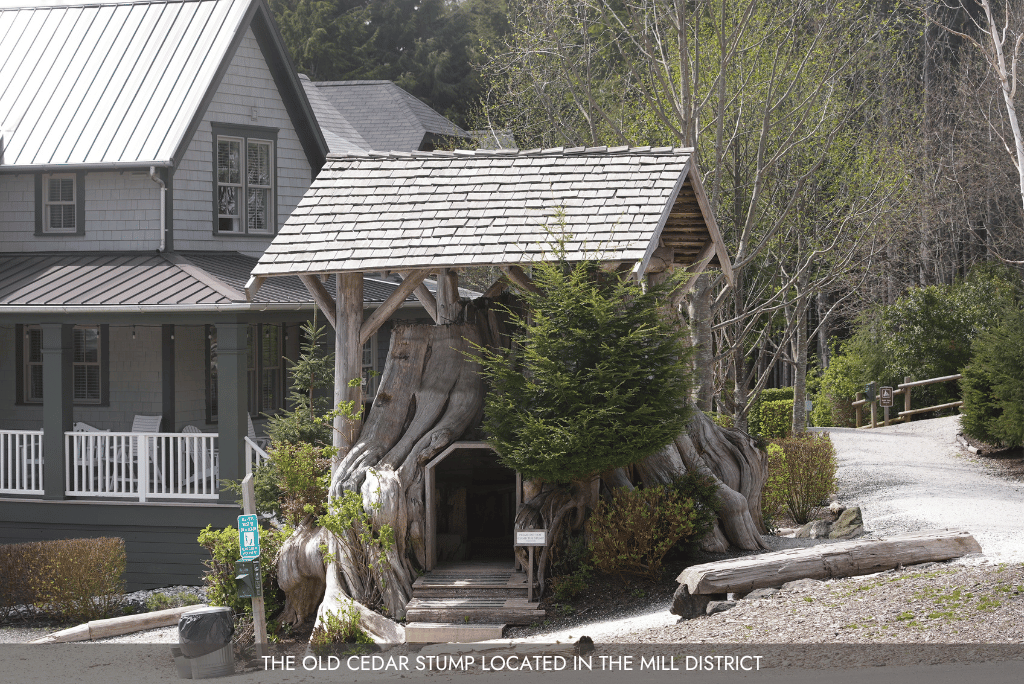
The Dorothy Anderson Cabin – Take a look at the original (now restored) cabin built back in the early 1900s by Dorothy Anderson, a rugged Scandinavian woman who moved to the coast after visiting and falling in love with its beauty. Once moving to the area, she built this cabin in Ocean City along with seven additional cabins (none remaining today) so that others could share in her love for the coast. According to the Museum of the North Beach in Moclips, WA, it was one of the first resorts of its kind on the Washington coast.
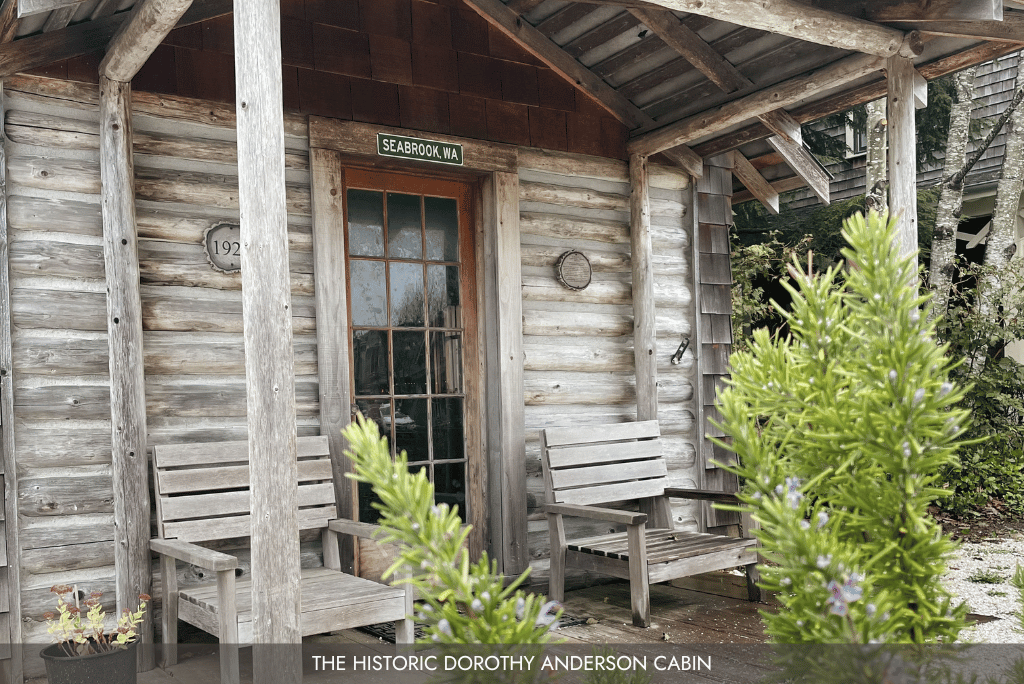
The Woodland Promenade – The pedestrian promenade located west of Meriweather Square was left as untouched as possible, with the original town plan being altered to conserve the space. Take note of the nursing trees inside of the promenade for a glimpse into the area’s history, specifically on the east end of the promenade, where the “Octopus” cedar tree grows out of a leftover stump from the earlier logging days.
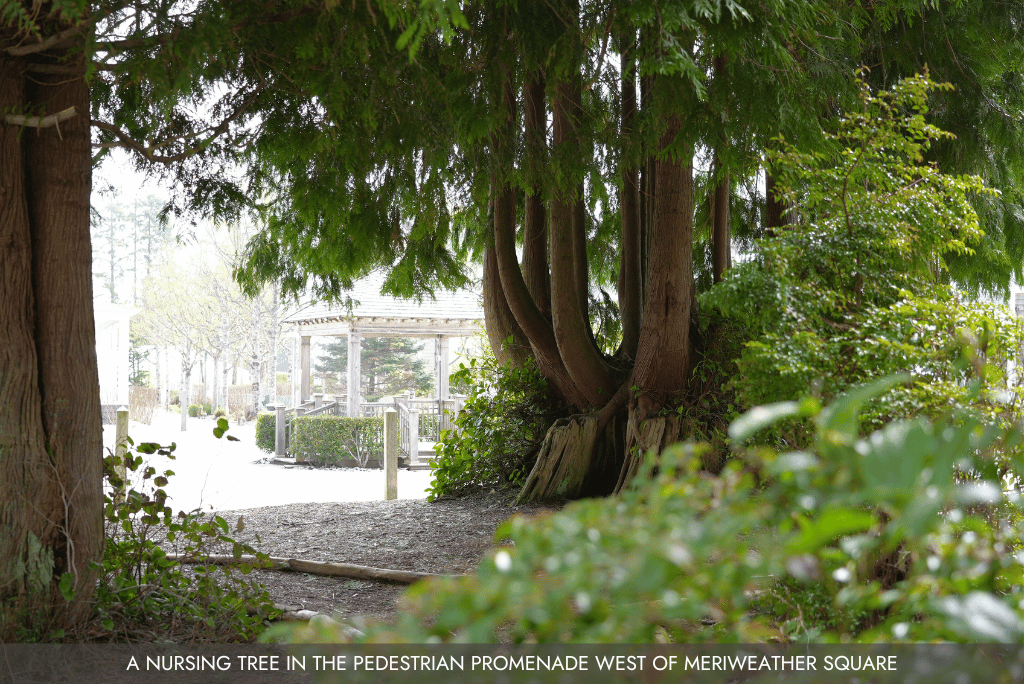
The Gnome Trail – The magical trail located in the Mill District is actually one of the old skid log roads that loggers used to harvest timber. At the base of the trail, hikers can see a large log with a flat top where logged trees were skidded across to what was formerly known as “Santa Claus Corner” due to the logger who directed the removal of the logs’ resemblance of Santa Claus.
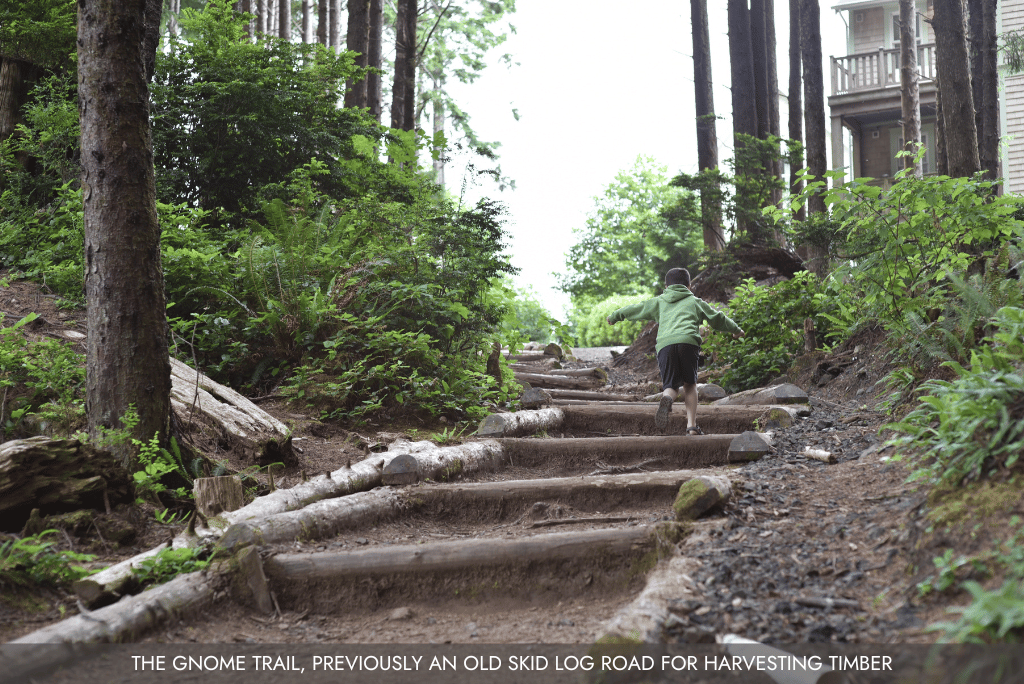
The Old Highway – Many people do not know that the original coastal highway before the current Hidden Coast Scenic Byway (Hwy 109) ran straight through the Pacific Glen and Northwest Glen Neighborhoods. There was even a bridge that once connected the two peninsulas! Instead of building oceanfront homes right to the coastal edge, Seabrook’s town planners wisely chose to preserve the old asphalt roadway by incorporating it into the town plan and creating a publicly accessible pedestrian esplanade that still exists in both neighborhoods to this day. The actual pavement from the old highway still exists under the recycled crushed oyster shell esplanade that runs along the coastal bluff’s edge.
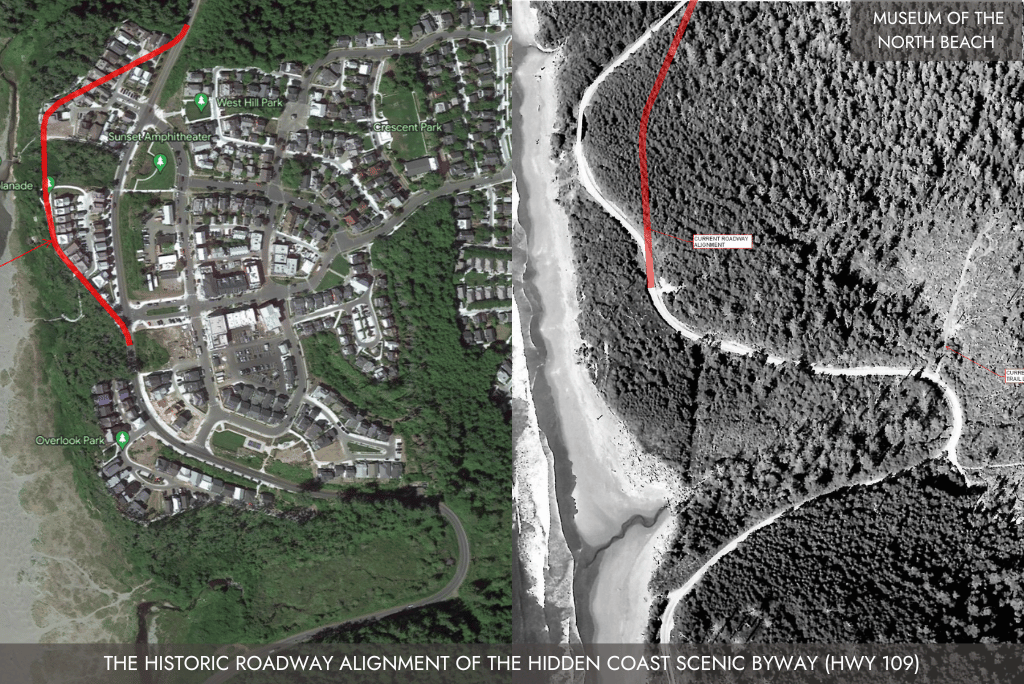
The Heritage Tree – Visit the large tree located at the southern end of the Elk Creek neighborhood. This Sitka spruce (Picea Sitchensis) tree is 130 feet tall, has a trunk diameter of 80 inches and is more than 200 years old.
Helping To Keep The Water Clean With Sustainability Efforts
“Seabrook is actually named for the brooks, streams, and waterways that go out to the ocean,” Stephen says. “It’s vitally important to make sure that they run clean and clear and that they are carefully managed so that by the time runoff water makes it to the ocean, development does not negatively impact the shore and shoreline.”
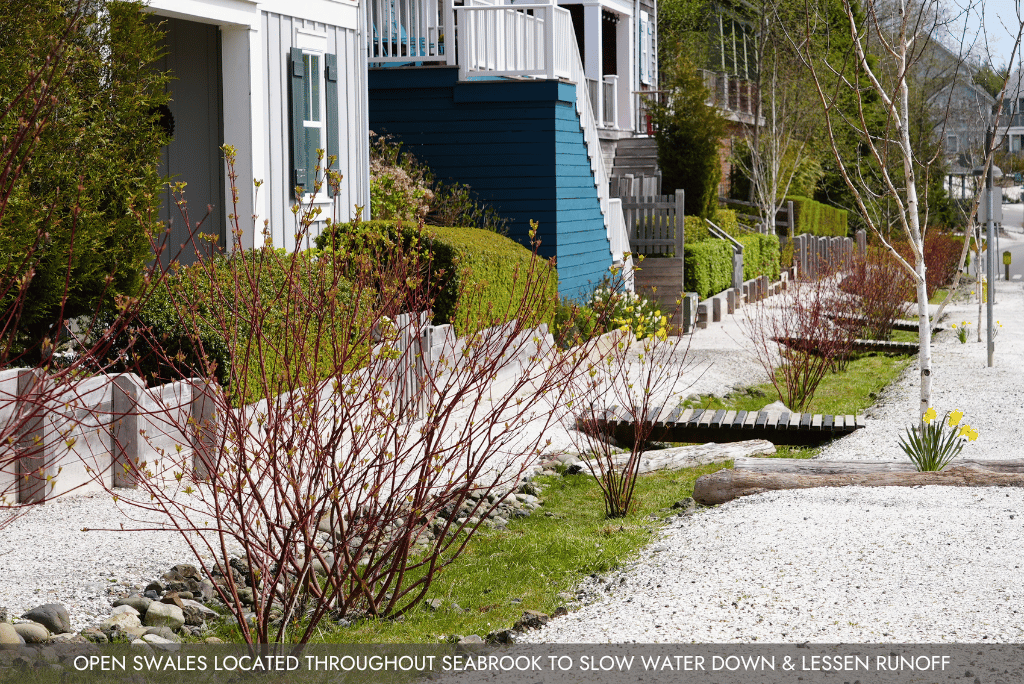
Seabrook is built upon new urbanism principles that leave behind a smaller footprint and focus on various ways to promote sustainable development. Here are just a few ways Seabrook contributes to cleaner water:
- Limiting the use of impervious surfaces, such as concrete and asphalt
- Narrow roads to encourage walking and biking, resulting in less motor vehicle pollution
- Smaller, intimate neighborhoods
- Shared community spaces versus individual lawns
- Crushed oyster shell pathways
- Open swales to slow water down
- Rain gardens to manage stormwater runoff
- Organic-based pesticides
- Organic-based fertilizers
More than 40% of Seabrook is retained in open space, meaning that all of that land is purposely left undeveloped to provide important greenways with varying topography. This permits Seabrook to build miles of woodland hiking and biking trails that connect Seabrook’s various neighborhoods. This also ensures that the health of these green spaces is allowed to thrive once again.
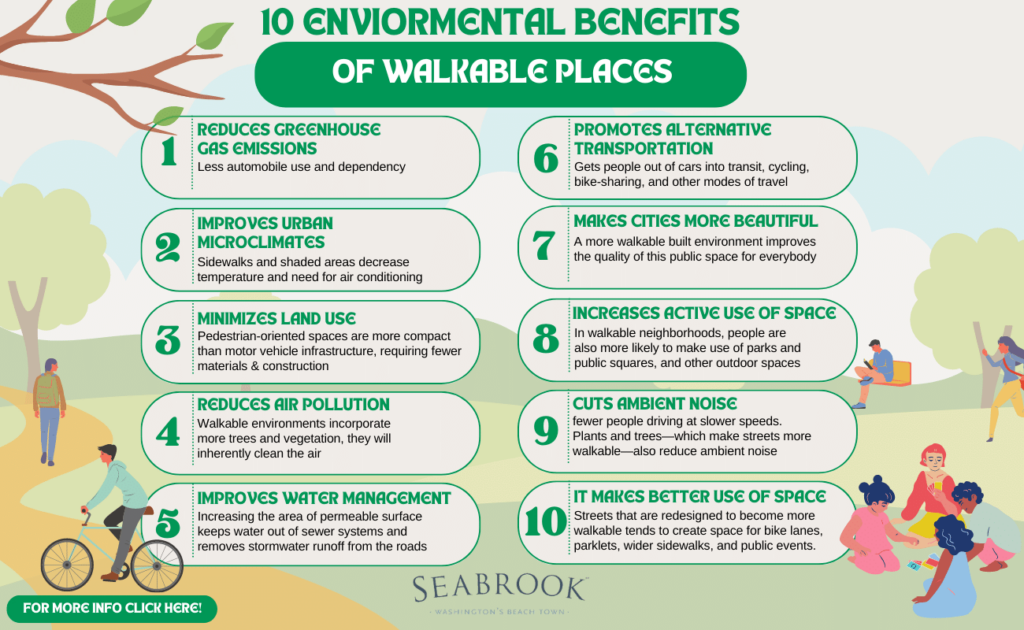
As the town grows, so will the forests. With continual efforts of Seabrook and community partners, this will result in not only a thriving community but a thriving coastal landscape to enjoy for many generations to come.
What You Can Do To Help
Join Seabrook’s team in their stewardship efforts by leaving the nature trails and beaches free of trash and debris, using natural materials only on the Gnome Trail, recycling, and walking instead of using gas-powered vehicles while visiting.
